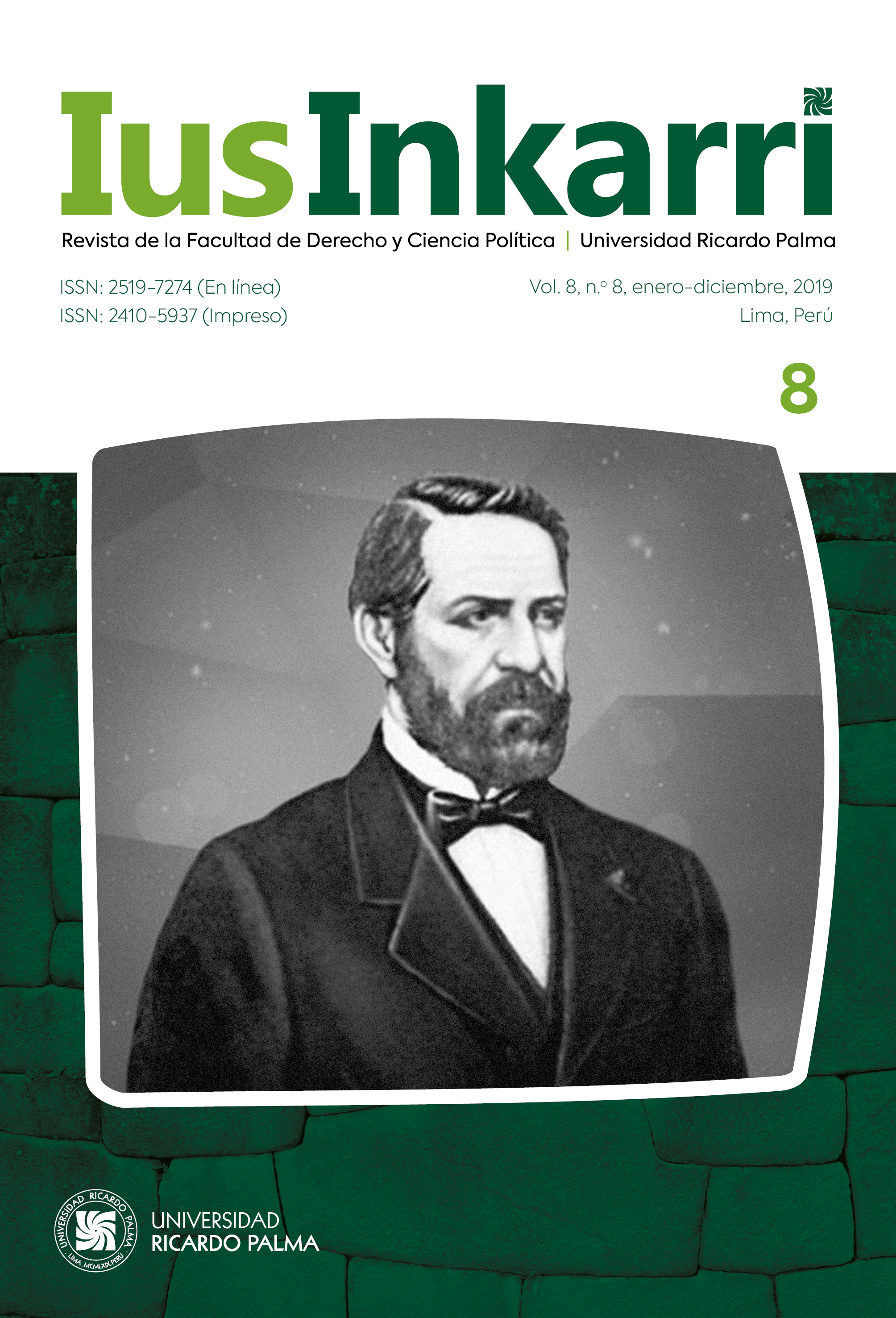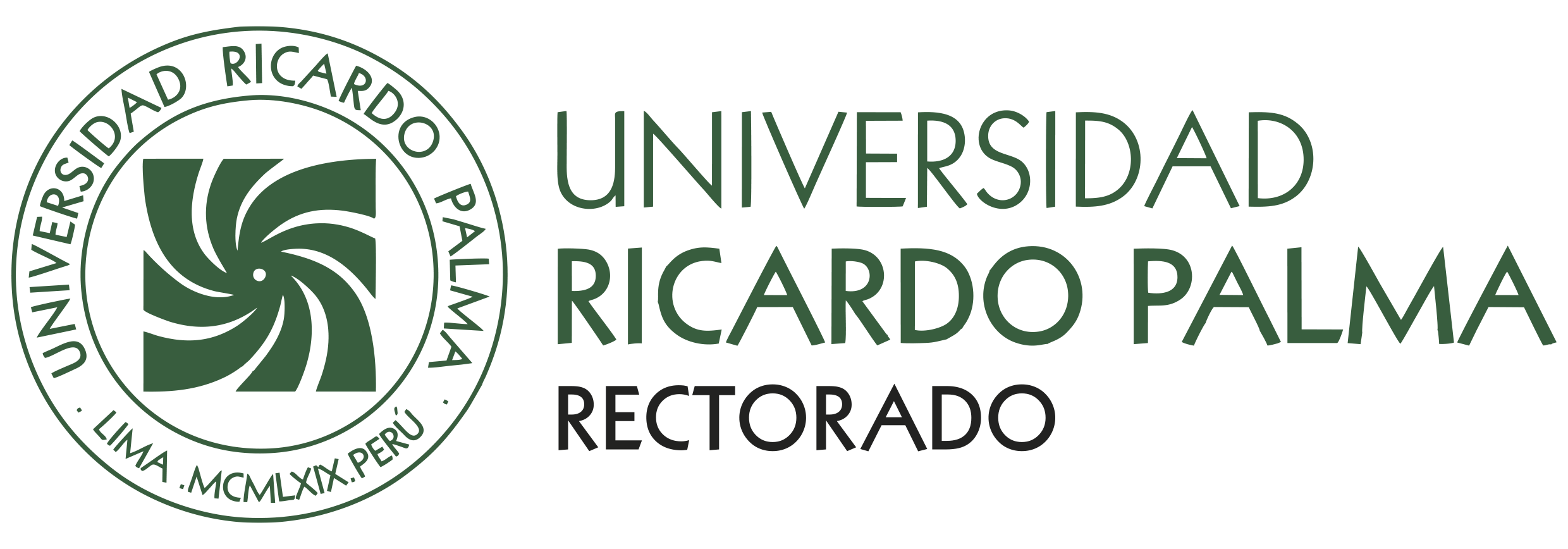The United Nations peace missions uphold as a model of foreign policy: An resemblance which trascends by means of the International Public Law principles the People’s Republic of China, Argentina and Brazil development standing
DOI:
https://doi.org/10.31381/iusinkarri.vn8.2727Keywords:
Peace missions, multilateralism, Public International Law, People’s Republic of China, Brazil and ArgentinaAbstract
In the course of the last three decades, the People’s Republic of China has been subject of a radical change regarding the implications of the geopolitical strategy related to its involvement in the United Nations peace missions. This paper appeals to the analysis of principles conforming to the Public International Law which have also influenced the international insertion approach by dint of the argentinian and brasilian foreign ministries conceived their contribution scheme to the United Nations peace missions.
Downloads
References
Aguilar Cavallo, G. (2006). “El reconocimiento jurisprudencial de la tortura y de la desaparición forzada de personas como normas imperativas de derecho internacional público”, Ius et Praxis, 12(1), 117-154. http://dx.doi.org/10.4067/S0718-00122006000100006.
Aldana, C. M. (2006). Negocios internacionales. Estrategias globales, Universidad Santo Tomas, Bogotá.
Arredondo, R. (2015). “Responsibility to Protect: An Argentine Perspective”, Pensamiento Próprio, 41, 67-94.
Breau, S. (2016). The responsibility to protect in international law: An emerging paradigm shift, Routledge, Londres.
Busso, A. (1994). “La relación bilateral con los Estados Unidos en el gobierno de Carlos Menem. Algunas perspectivas y hechos sobresalientes”. Relaciones Internacionales, 3(6). Recuperado a partir de https://revistas.unlp.edu.ar/RRII-IRI/article/view/1976 el 23 de junio de 2019.
Caminos, H. (1995). “Humanitarian Intervention and the InterAmerican System”, en Al-Nauimi, N. & Meese, R. (1995) (Eds.). International Legal Issues Arising Under the United Nations Decade Of International Law, Martinus Nijhoff Publishers, La Haya, 963-998.
Cançado Trindade, A. A. (2003). “Los aportes latinoamericanos al primado del derecho sobre la fuerza”, en Cançado Trindade, A. A. & Vidal Ramírez, F. (2003) (Eds.). Doctrina Latinoamericana de Derecho Internacional, Tomo II, Corte Interamericana de Derechos Humanos, San José de Costa Rica, 37-48.
Capie, D. H., & Evans, P. M. (2007). The Asia-Pacific Security Lexicon. Institute of Southeast Asian Studies, Singapur. https://doi.org/10.1080/02185377.2012.748960.
Chapnick, A. (1999). “The Middle Power”, Canadian Foreign Policy Journal, 7 (2), 73–82. https://doi.org/10.1080/11926422.1999.9673212.
Cooper , A. F. & Jongryn, M. (2013). “The Middle 7 Initiative”, en Mo, J. & Jongryn, M. (2013) (Eds.). Middle powers and G20 governance. Springer, Londres, 104-122.
Cousins , B. et al (2018). “BRICS, middle-income countries (MICs), and global agrarian transformations: internal dynamics, regional trends, and international implications”, Globalizations, 15(1), 1-11, https://doi.org/10.1080/14747731.2018.1429104.
Cox, R. (1989). “Middlepowermanship, Japan, and Future World Order” International Journal, 44, 823–862 https://doi.org/10.1177/002070208904400405.
Dal, E. P. (2018). “Profiling Middle Powers in Global Governance and the Turkish Case: An Introduction” en Dal E. P. (Ed.) (2018), Middle Powers in Global Governance, Palgrave Macmillan, Londres, 1-31.
Daza Izquierdo, J. (2015). “Crecimiento y rentabilidad en el mercado emergente brasileño”, Cuadernos de Gestión, 15(2), 91-112. https://doi.org/10.1016/j.ijhm.2011.03.009.
Efstathopoulos, C. (2015). Middle Powers in world trade diplomacy: India, South Africa and the Doha development agenda, Springer, Londres.
Escudé, C. (2012). “Principios de Realismo Periférico. Una teoría argentina y su vigencia ante el ascenso de China”, Cuadernos del Sur Historia, 43-44, 233-236.
Ford, C. (2010). The mind of empire: China’s history and modern foreign relations, University Press of Kentucky, Lexington.
Gill, B y Huang, C-H. (2013). “The People’s Republic of China”, en Bellamy, A. & Williams, P. (Eds.) (2013), Providing peacekeepers: The politics, challenges, and future of United Nations peacekeeping contributions, Oxford University Press, Oxford.
Gilley, B. & O’Neil, A. (2014). “China’s rise through the prism of middle powers” en Gilley, B. & O’Neil, A. (Eds) (2014). Middle Powers and the Rise of China, Georgetown University Press, Washington DC.
Griffiths, M. (2011). Rethinking international relations theory, Macmillan International Higher Education, Londres.
Guo, S. (2014). “The Peacekeeping Decision-Making Process and the Modality of Financing in China” en de Guttry, A., Sommario, E. & Zhu L. (Eds.) (2014), China’s and Italy’s Participation in Peacekeeping Operations: Existing Models, Emerging Challenges, Lexington Books, Langham, 93-115.
Jingzhi, L. & Ping, P. (2014). Reconstructing China: The Peaceful Development, Economic Growth, and International Role of an Emerging Superpower, Mc Graw Hill, Nueva York.
Kim, S. (1995). “China’s International Organizational Behavior” en Robinson, T. & Shambaugh D. (Eds.) (1995), Chinese Foreign Policy: Theory and Practice, Oxford University Press, Oxford, 515–532.
Livingstone, G. (2013). America’s backyard: the United States and Latin America from the Monroe Doctrine to the War on Terror, Zed Books Ltd., Londres.
Lourenção, H. J. (2017). “Recent agreements between Brazil and the United States on defence and security” en Ricco, M. F. F. (Ed.) (2017). Culture and Defence in Brazil: An Inside Look at Brazil’s Aerospace Strategies, Routledge, Londres, 15-28.
OEA (1983). Informe de la decimocuarta reunión ordinaria de la Junta Interamericana de Agricultura, Oficina Central de la Dirección General del Instituto Interamericano de Cooperación para la Agricultura, San José de Costa Rica.
Robertson, J. (2017). “Middle-power definitions: confusion reigns supreme”, Australian Journal of International Affairs, 71(4), 355- 370. https://doi.org/10.1080/10357718.2017.1293608.
Salgado Espinoza, R. (2016). “Responsibility to Protect as a Norm under Construction: The Divergent Views from the South”, Lasa Forum, 47(2), 21-25.
Sotomayor Velázquez, A. C. (2013). “Democratization and commitment to peace: South America’s motivations to contribute to peace operations” en Kenkel, K. M. (Ed.) (2013). South America and peace operations: coming of age, Routledge, Londres, 45-63.
Sun, J. (2015). “The Construction of Uncertainty and Threat: Theoretical Debates on China’s Rise”, en Aggarwal, V. K. & Newland, S. A. (2015). Responding to China’s Rise. In US and EU Strategies, Springer Verlag, Nueva York, 77-97.
Tamburini, F. (2002). “Historia y destino de la “doctrina Calvo”: ¿Actualidad u obsolescencia del pensamiento de Carlos Calvo?”, Revista de estudios histórico-jurídicos, 24, 81-101.
Tickner, A. (2012). “Rising Brazil and South America. Foreign Policy” en Smith, S., Hadfield, A., & Dunne, T. (Eds.) (2016). Foreign policy: theories, actors, cases. Oxford University Press, Oxford 367-383.
Waltz , K. (1986). “Reflections of Theory of International Politics: A response to My Critics”, en Keohane, R. (Ed.) (1986). Neorealism and Its Critics, Columbia University Press, Nueva York, 322-345.
Wang J. (1999). “Managing Conflict: Chinese Perspectives on Multilateral Diplomacy and Collective Security” en Yong, D. & Fei-ling, W. (Eds.) (1999). In the Eyes of the Dragon: China Views the World, Rowman and Littlefield, Langham, 73–96.
Wang, B. W. (2013). “The Dragon brings peace? Why China became a major contributor to United Nations peacekeeping”, Stimson Center Spotlight, Recuperado a partir de http://www.stimson.org/spotlight/the-dragon-brings-peace-why-china-became-a-major-contributor- to-united-nations-peacekeeping-/ el 13 de julio de 2019.
Zagoria, D. S. (1974). “Mao’s Role in the Sino-Soviet Conflict”, Pacific Affairs, 47(2), 139-153, https://doi.org/139-153.10.2307/2755604.
Zhang, Y. (1998). China in international society since 1949: Alienation and beyond. Springer, Londres.
Zhao, S. (2012). “China’s foreign policy as a rising power in the early twenty-first century: the struggle between taoguangyanghui and assertiveness” en Lai, H. & Lu, Y. (Eds.) (2012). China’s soft power and international relations, Routledge, Londres, 191-211.
Downloads
Published
How to Cite
Issue
Section
License
Copyright (c) 2019 Julio Francisco Villarreal

This work is licensed under a Creative Commons Attribution 4.0 International License.













